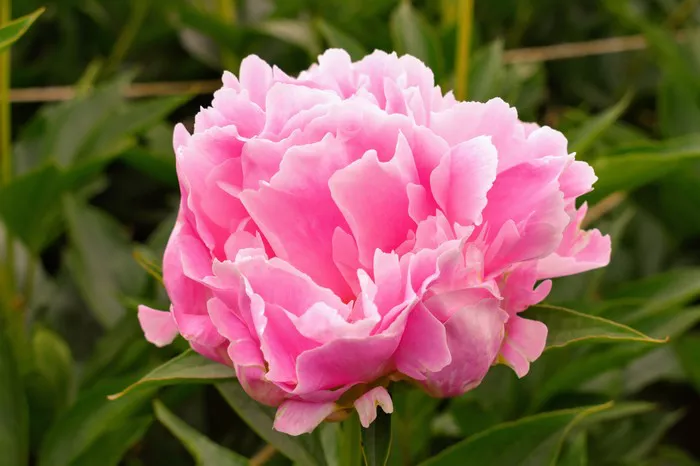Peonies, with their extravagant blooms and enchanting fragrance, have long been cherished as one of the most beloved ornamental flowers in gardens around the world. From their rich history in ancient cultures to their enduring popularity in modern landscapes, peonies captivate with their luxurious appearance and ease of care. For those seeking to cultivate these timeless beauties in their own gardens, this complete guide offers valuable insights and practical tips for successfully growing peony flowers.
Understanding Peonies: A Brief Overview
Peonies (Paeonia spp.) belong to the Paeoniaceae family and encompass a diverse range of herbaceous and woody perennial plants. Native to Asia, Europe, and North America, peonies are renowned for their large, showy blossoms, which come in an array of colors, including white, pink, red, and yellow. They are classified into three main types: herbaceous, tree, and intersectional (also known as Itoh) peonies, each with its own distinct characteristics and growing requirements.
Selecting the Right Varieties
Before embarking on your peony-growing journey, it’s essential to choose the right varieties that suit your climate, soil type, and garden space. With countless cultivars available, selecting the perfect peonies can seem daunting, but considering factors such as bloom time, flower form, and plant height can help narrow down your options.
For beginners, herbaceous peonies are an excellent choice, as they are easy to grow and maintain. Varieties such as ‘Sarah Bernhardt,’ ‘Karl Rosenfield,’ and ‘Bowl of Beauty’ are popular for their robust growth habits and abundant blooms.
Tree peonies, with their woody stems and elegant, tree-like structure, add a touch of architectural beauty to any garden. Varieties like ‘Rockii Hybrids,’ ‘Shimanishiki,’ and ‘High Noon’ are prized for their stunning flowers and long lifespan.
Intersectional peonies, a hybrid of herbaceous and tree peonies, combine the best of both worlds, featuring the enduring vigor of herbaceous varieties and the exquisite blooms of tree peonies. ‘Bartzella,’ ‘Julia Rose,’ and ‘Cora Louise’ are among the most sought-after intersectional peonies for their exceptional beauty and performance.
Preparing the Planting Site
Peonies thrive in well-drained soil with good fertility and ample sunlight. Before planting, choose a location in your garden that receives at least 6-8 hours of direct sunlight daily and has soil with a pH level between 6.5 and 7.5.
Prepare the planting site by amending the soil with organic matter, such as compost or aged manure, to improve its structure and nutrient content. Remove any weeds, rocks, or debris from the area, ensuring that the soil is loose and friable.
Planting Peonies
Fall is the ideal time to plant peonies, allowing them to establish their root systems before the onset of winter dormancy. Follow these steps for successful planting:
1. Dig a Hole: Dig a hole that is wide and deep enough to accommodate the peony’s root system, typically around 2 feet wide and 1 foot deep.
2. Amend the Soil: Mix in compost or organic matter with the backfill soil to provide nutrients and improve drainage.
3. Plant the Peony: Place the peony in the center of the hole, ensuring that the eyes (buds) are no more than 2 inches below the soil surface. Backfill the hole, gently firming the soil around the roots.
4. Water Thoroughly: After planting, water the peony deeply to settle the soil and provide moisture to the roots.
5. Mulch: Apply a layer of organic mulch, such as shredded bark or straw, around the base of the plant to retain moisture and suppress weed growth.
Caring for Peonies
Once established, peonies require minimal maintenance but benefit from regular care to ensure healthy growth and abundant blooms. Here are some essential care tips:
1. Watering: Peonies prefer consistent moisture during the growing season, so water deeply during dry spells, especially in the spring when they are setting buds.
2. Fertilizing: Apply a balanced fertilizer, such as 10-10-10, in early spring before new growth emerges to provide essential nutrients for healthy foliage and blooms.
3. Supporting: Tall varieties may require staking or support to prevent the heavy flower heads from bending or breaking. Install supports early in the season to avoid damaging the emerging growth.
4. Deadheading: Remove spent flowers promptly to encourage continuous blooming and prevent seed production, which can divert energy away from flower production.
5. Dividing: Over time, peonies may become overcrowded, leading to reduced blooming. Divide mature plants every 5-7 years in the fall to rejuvenate them and maintain vigorous growth.
Dealing with Pests and Diseases
While peonies are relatively pest and disease-resistant, they may occasionally encounter issues such as botrytis blight, powdery mildew, or nematodes. To minimize problems:
1. Practice Good Sanitation: Remove and dispose of any diseased or damaged foliage to prevent the spread of pathogens.
2. Provide Adequate Air Circulation: Plant peonies with sufficient spacing between them to allow for good airflow, reducing the risk of fungal diseases.
3. Monitor for Pests: Keep an eye out for common pests such as aphids, thrips, and spider mites, and treat infestations promptly with insecticidal soap or neem oil.
4. Avoid Overhead Watering: Water at the base of the plant to prevent fungal diseases, as overhead watering can promote the spread of spores.
Conclusion
By following these guidelines and providing proper care, you can enjoy a spectacular display of peony flowers year after year, adding timeless beauty and elegance to your garden landscape. Whether adorning flower beds, borders, or cutting gardens, peonies are sure to delight with their exquisite blooms and captivating fragrance, making them a cherished favorite among gardeners worldwide.


